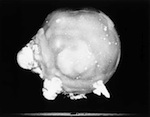This is an entry in an occasional series of posts looking back at the Ring Magazine Fights of the Year from 1970 to 2009.
In 1978, Muhammad Ali defended his unified (WBC & WBA) Heavyweight championship against Leon Spinks in Las Vegas. Spinks came in as an underdog (with a 6-0-1 record) and shocked everyone by winning a majority decision (140-145 and 141-144, vs. one judge’s 143-142 for Ali). I scored it a bit wider (139-146), but recognize even the dissenting judge’s score as reasonable; there were a lot of close rounds in this fight.
This fight was arguably the high point of Spinks’ professional life. As for Ali, it was the penultimate fight to his legitimate career: only a rematch (which he would win) and an ill-advised 2-fight comeback (both losses) remained ahead of him.
Overview
The cliche about history repeating as farce might have some relevance here. This fight had more than a few echos of Ali / Frazier III. Ali was fighting a faster, more agile opponent whose goal was to close, trap, and attack, and Ali’s strategy relied upon a mix of tactics: circling and jabbing, trading, and the infamous rope-a-dope.
The outcome here would be different.
Reaction
The differences in this fight sprang from the facts that Ali was far over the hill, and that Spinks, for all his virtues, was no Joe Frazier. So you were left with a pale imitation of the great Ali / Frazier fights, in which Ali deployed the old tricks, but couldn’t make them stick even against a lesser opponent.
(I should add that I hate to run down Spinks, because he was a very good fighter in his own right. To give him his due, he was better at fighting on the outside that Joe Frazier ever was. Frazier, however, was one of the all time greats, and Spinks was not.)
All that said, the 15th round was a magnificent display of skill, endurance, and spirit, and the equal of any round in the Ali / Frazier trilogy.


